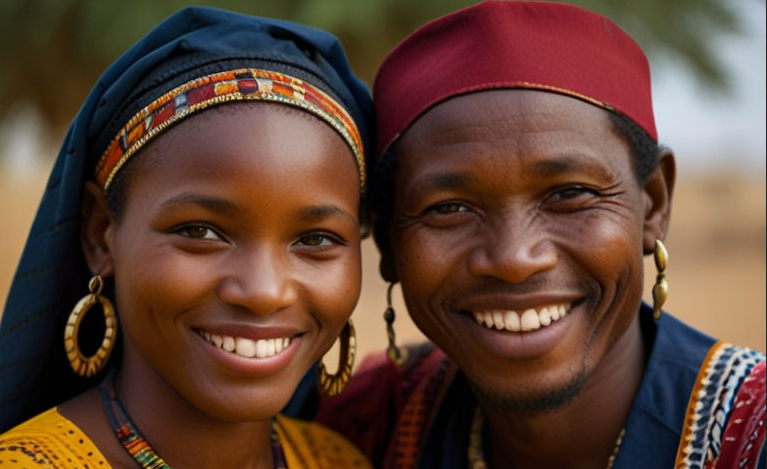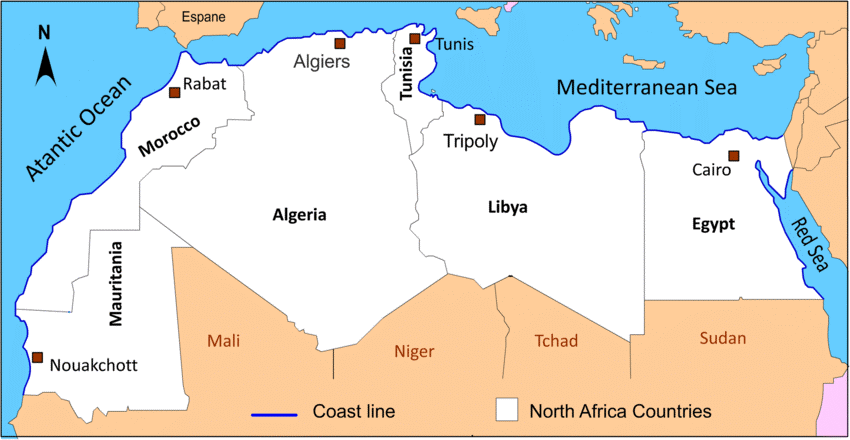Originally established in 1961, the Maasai Mara National Reserve is one of the most remarkable wildlife reserves in Africa. Located in southwestern Kenya, this reserve offers a wide range of experiences and activities for both local and international tourists. Together with the neighboring Tanzanian Serengeti National Park, Maasai Mara is home to one of the most spectacular ecosystems in the world. It hosts up to 95 mammal species and 570 recorded bird species. From its diverse wildlife to its rich cultural heritage, the Maasai Mara is a destination that deserves to be on every adventurer’s bucket list. Let’s dive deeper into the cultural and wildlife experiences offered by the Maasai Mara.
The Maasai People
The Maasai Mara is home to an indigenous East African tribe known as the Maasai. This is a nomadic pastoralist community that originally occupied the southern region of Kenya. This tribe is among the few African communities whose traditional beliefs and practices remain unchanged by modern Western influences. The Maasai people are popular for their traditional attire, shukas, and vibrant beadwork.

When visiting the Mara, tourists have the option of visiting nearby Maasai villages to get a glimpse of the Maasai culture and way of life. These visits are usually organized by travel agencies and can be incorporated into one’s itinerary. Usually, a whole day is set aside to experience Maasai culture. A few hours of this day are then dedicated to visiting neighboring Maasai villages. During this time, visitors are given a detailed tour of the village. They get to witness the Maasai way of life and even engage in traditional song and dance. Tourists also learn the role of the Maasai people in promoting wildlife protection and conservation efforts at the Maasai Mara. The cost of this activity ranges between USD 25 to 50 per person, which includes the tourists’ gift to the village and transportation to and from one’s accommodations. Visitors may also consider supporting the Maasai people by purchasing their handmade crafts.
Wildlife at the Maasai Mara
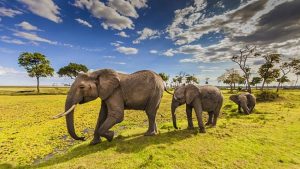
-
The Big Five
The Maasai Mara is popular because it houses the Big Five (lion, leopard, rhino, elephant, and buffalo), among other iconic wildlife species such as cheetahs, zebras, giraffes, hyenas, and wild dogs. When visiting the Mara, request your tour guide to help you spot the Big Five. Consider carrying a camera for these game drives to capture these unique experiences.
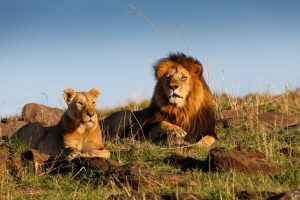
-
The Great Migration
One of the 7 wonders of the world takes place annually at The Maasai Mara between July and October. Wildebeestes, antelopes, and zebras cross the Mara River to indicate the shifting seasons. The wildlife migrates from Tanzania’s Serengeti to Kenya’s Maasai Mara, which are separated by the Mara River. These animals usually migrate to Kenya in search of greener pastures and abundance in water sources. During this time, the Kenyan side begins experiencing rainfall as the Tanzanian side gets a bit drier. When scheduling one’s trip to the Mara, it is important to consider visiting around this time to witness one of the most amazing wildlife spectacles. One may choose to experience this spectacle in a tour vehicle or a hot air balloon.

-
Birdwatching
The Mara is home to over 500 bird species. Among them are approximately 47 species of birds of prey. It is safe to say that the Maasai Mara is a bird watcher’s haven as its treetops, skies, and bushes are abundant. Ranging from the largest birds, such as ostriches, to the smallest bird species, the Mara provides a rich birdwatching experience to its visitors. Common grassland birds in the Mara include Secretary Birds, Grey Herons, Sacred Ibis, Yellow-billed Storks, and Kori Bustards, among others. River birds that one can spot at the Mara River include Ross’s Turaco, Martial Eagle, Pygmy Falcon, Schalow’s Turaco, Giant Kingfisher, and Pygmy Kingfisher.

Notable Cultural and Wildlife Interactions at the Mara
The Maasai Mara takes a conservation approach to all its cultural and wildlife experiences. The National Reserve collaborates with local communities to foster eco-tourism and environmental conservation efforts. The Maasai people are instrumental in wildlife protection and environmental conservation as they watch for any suspicious activities in and around the Mara. This way, they play an important role in preventing poaching and environmental degradation.
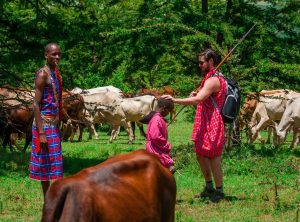
Additionally, all hotels and accommodations set up within the Mara take the initiative to preserve the environment by practicing ecotourism. They do so by implementing green initiatives such as the utilisation of green energy sources and green construction practices to avoid interfering with the rich ecosystem that exists in the Mara. Tourists are welcome to join this initiative by avoiding littering or interfering with the wildlife during their visit to the Mara.
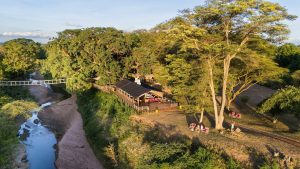
Best Time to Visit the Maasai Mara
The most iconic experience at the Maasai Mara is the Great Migration. Therefore, tourists should schedule their visit between July and October if possible. Up to 1 million zebras, antelopes, and wildebeest cross the Mara River and migrate from the Serengeti into the Maasai Mara in search of green pasture and water. This great exodus begins around mid-July and by September, the wildlife is well-settled in the Mara where they enjoy grazing in the endless green plains. During this time, crocodiles and the big cats all come to life as they prepare to hunt and catch prey during the Great Migration.
A trip to the Mara during this time is most opportune because one is likely to encounter cool to warm weather. Remember to get vaccinated against regional illnesses such as malaria as mosquitos may be in abundance in the national reserves. Pack attire suitable for warm weather but remember to carry a few changes of clothes for cold nights. Sunscreen, hats, and sunglasses are extremely important as the sun is very hot in the tropics. When visiting local Maasai villages, it is important to wear clothes with decent coverage to avoid culture shock in local communities.
The Maasai Mara provides a unique and rich cultural and wildlife experience to both local and international tourists. Ranging from diverse wildlife ecosystems to rich cultural experiences, the Mara is a destination that must be on every adventure’s bucket list. Birdwatchers are not left behind as this destination is home to over 500 bird species. Tourists must consider adopting eco-friendly options during their visit to foster conservation efforts made by the local communities. If you’re looking for the most ideal wildlife and cultural tourist destination in Africa then look no further, as the Maasai Mara is exactly what you’re looking for!
References
Maasai Mara. (n.d.). About Maasai Mara & Conservancies. https://www.masaimara.com/information-masai-mara.php
Maasai Mara. (n.d.). Birds of the Maasai Mara. https://www.masaimara.com/birds-masai-mara.php
Maasai Mara.com. (n.d.). Maasai Mara. https://www.maasaimara.com/
Maasai Mara Travel. (2024). Maasai Mara. https://www.masaimara.travel/
Maasai Mara Travel. (2024). Maasai Village Visit. https://www.masaimara.travel/maasai-village-tour.php
Mara Triangle. (n.d.). Bird list: A superb collection. https://www.maratriangle.org/maratriangle/bird-list

